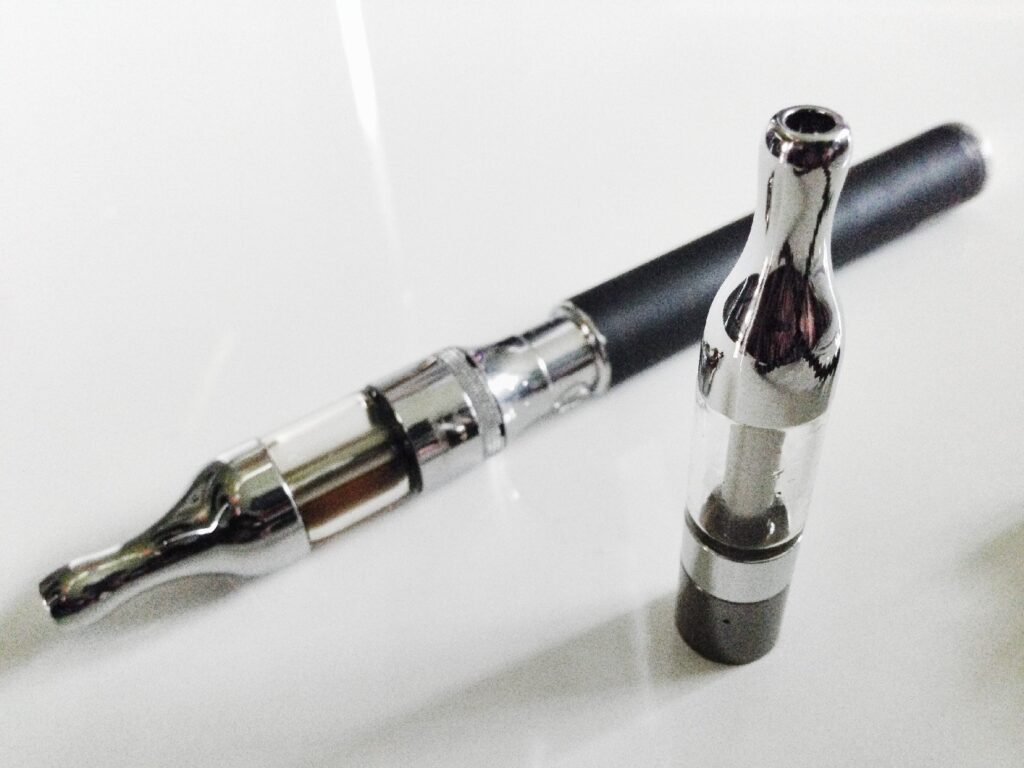A portable vaporizer is an electronic device that provides heat to substances, in order to turn them into a gas. The gas produced by the device can be inhaled as a vapor. Inhalation of such gases with water vapor released therefrom and steam, which are also called vapes for short, is often referred to as vaping. Vaping liquids and waxes typically contain nicotine, flavorings and other additives only in small amounts.
The portability of the device allows users to carry it everywhere for on-the-go benefits such as being less painful at work or travelling. Portability and discretion are major benefits of vaping, and often make it a popular choice for beginner vapers who want to switch from smoking cigarettes or other combustible substances.
Portable vaporizers are easy to use but not perfect. Although the lack of filtration may technically extend the lifespan of the vape itself, often when they are used in public, e-liquid residue can be left behind. This is a concern even if these devices are used in designated areas because it may cause a distraction to those around them.
History of portable vaporizers

Using a vaporizer to inhale dry herb vapor as cannabis, commercial concentrates, CBD oils, or the waxes from dry herbs has been done for many years. The first vaporizers were bulky glass globes and did not have any mechanism that would allow them to be portable. Technology has changed over time with the creation of smaller and more sophisticated devices that are even more powerful than the first. Innovations in batteries, heating elements, and mechanisms for controlling the release of steam have consistently improved upon vape devices and made them more efficient.
Safety of portable vaporizers
It is important to know that there are varying levels of substances that can exist in the vapor in a portable vaporizer. Also, it is possible for toxins to be emitted from residue left behind on the device or the ones being used around them. It is because of this that many people are turning to herbal vaporizers as an alternative to vaping e-liquids and waxes. However, this may not be a perfect solution because other chemicals and toxins can be emitted and inhaled with herbal material so it is important to seek out how the herbs were grown, where they were grown, and what pesticides were used if any at all.
Convection vs Conduction portable vaporizer
Portable vaporizers have a wide variety of heating systems that include convection, conduction and other types of heating systems. There are vape pens that are specifically made for concentrates, wax pens that are used with herbs, and even dry herb vaporizers. There are also portable vaporizers for use with e-liquids, which can usually be used interchangeably with other substances depending on the type of unit being used.
Convection vaporizers heat the substance without direct flame via the air flow over the heating element. Conduction vaporizers heat the substance by having it touch a heating element, which can be any part of the device. The heating element can be a coil of wire, which is what is used in more traditional vaporizers.
The heating element can also be a metal rod placed through the center of the chamber. This type of heating element is used in the Goon 2 and 3D Vaporizer from DaVinci, among other units. The battery-powered convection vaporizers make use of heat spreaders to disperse heat evenly in a chamber. This type of device may not need a heat sink, instead dispersing heat via air flow.
Types of portable vaporizer

Portable vaporizers can be used to inhale a variety of substances, such as e-liquids, concentrates, waxes and dry herbs. The amount of substance that can be used with each device is dependent on the type. An e-liquid vaporizer may only be able to hold 1 milliliter while a wax pen may be able to hold up to half an ounce (15 milliliters). Dry herb vaporizers may have a variety of different options, but they all serve the same purpose.
There are many different types of devices or mechanisms for vaping substances that are portable vaporizers. Vape pens are designed specifically for use with oils and concentrates, e-juices, dry herbs, and even waxes. Vape pens are usually designed to be battery powered and can be used with e-liquids, concentrates, waxes and dry herbs along with a wide variety of other substances.
Vaporizers can come in many different shapes and sizes. Most are designed to be portable, often making use of rechargeable batteries or magnetic chargers. This allows them to be used anywhere without having to worry about finding a power source or worrying that someone might try to steal it.
Vaporizer technology is a continuously evolving process. Although there have been many portable vaporizers that have been developed for use with e-liquids, the creation of wax pens has taken this concept even further. Many wax pens are compatible with essential oils and concentrates, which makes them ideal for those who like to vape a variety of substances.
There are also vape pens that may have a larger battery capacity for longer vaping sessions, which is why they tend to look more like pen shaped devices such as the Puffco Plus Wiz as opposed to cylindrical vape units like the Goon.

